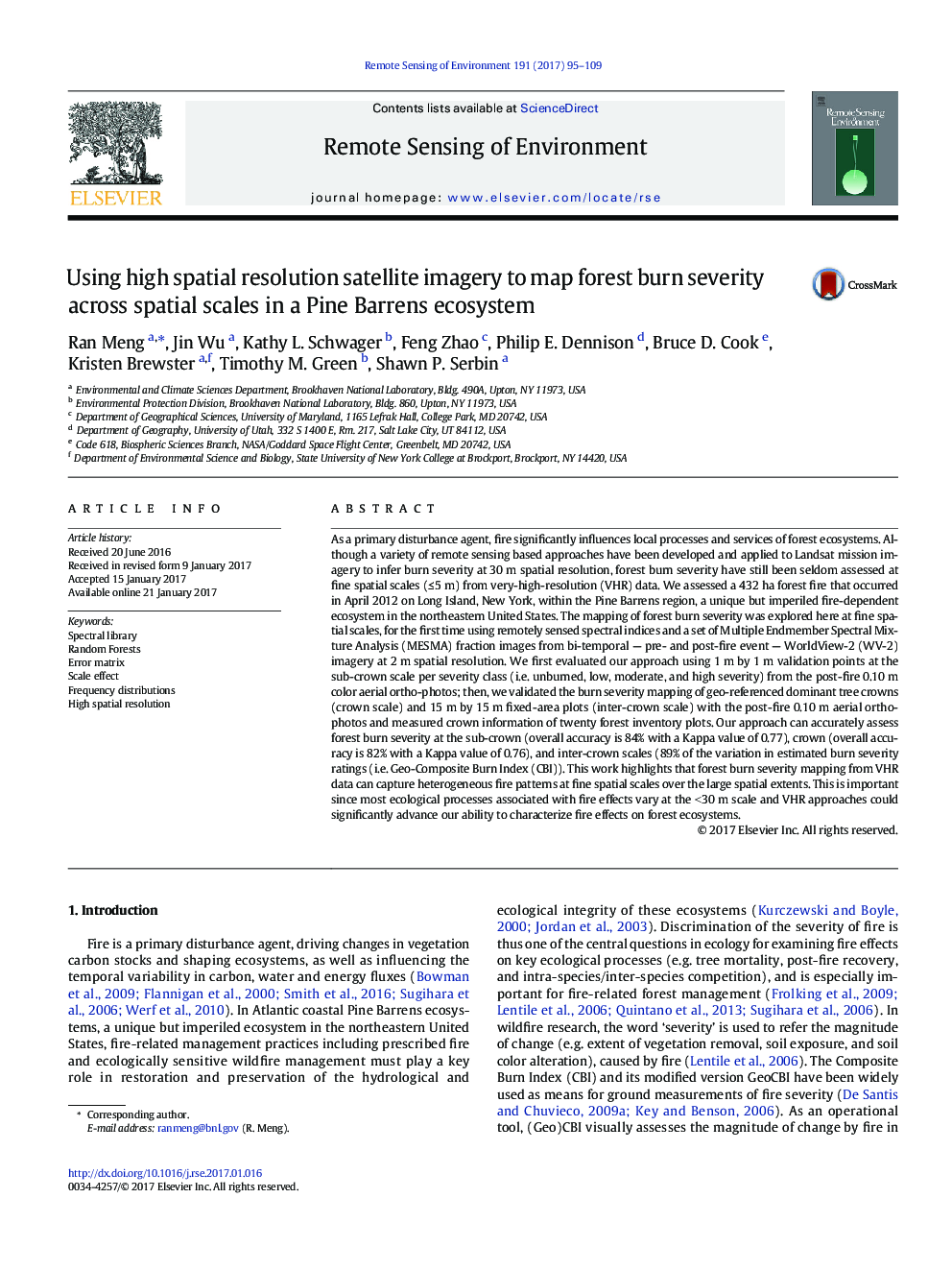| Article ID | Journal | Published Year | Pages | File Type |
|---|---|---|---|---|
| 5755028 | Remote Sensing of Environment | 2017 | 15 Pages |
â¢An approach for mapping burn severity at fine spatial scales (â¤Â 5 m) is presented.â¢MESMA fractions and a spectral index are used as predictor variables.â¢Spectral indices that adjusted for background effects showed higher performance.â¢Towards improvement of fire-related management practices in Pine Barrens ecosystems.
As a primary disturbance agent, fire significantly influences local processes and services of forest ecosystems. Although a variety of remote sensing based approaches have been developed and applied to Landsat mission imagery to infer burn severity at 30 m spatial resolution, forest burn severity have still been seldom assessed at fine spatial scales (â¤Â 5 m) from very-high-resolution (VHR) data. We assessed a 432 ha forest fire that occurred in April 2012 on Long Island, New York, within the Pine Barrens region, a unique but imperiled fire-dependent ecosystem in the northeastern United States. The mapping of forest burn severity was explored here at fine spatial scales, for the first time using remotely sensed spectral indices and a set of Multiple Endmember Spectral Mixture Analysis (MESMA) fraction images from bi-temporal - pre- and post-fire event - WorldView-2 (WV-2) imagery at 2 m spatial resolution. We first evaluated our approach using 1 m by 1 m validation points at the sub-crown scale per severity class (i.e. unburned, low, moderate, and high severity) from the post-fire 0.10 m color aerial ortho-photos; then, we validated the burn severity mapping of geo-referenced dominant tree crowns (crown scale) and 15 m by 15 m fixed-area plots (inter-crown scale) with the post-fire 0.10 m aerial ortho-photos and measured crown information of twenty forest inventory plots. Our approach can accurately assess forest burn severity at the sub-crown (overall accuracy is 84% with a Kappa value of 0.77), crown (overall accuracy is 82% with a Kappa value of 0.76), and inter-crown scales (89% of the variation in estimated burn severity ratings (i.e. Geo-Composite Burn Index (CBI)). This work highlights that forest burn severity mapping from VHR data can capture heterogeneous fire patterns at fine spatial scales over the large spatial extents. This is important since most ecological processes associated with fire effects vary at the < 30 m scale and VHR approaches could significantly advance our ability to characterize fire effects on forest ecosystems.
